Review: LG Quantum
Nov 23, 2010, 2:54 PM by Eric M. Zeman
LG's first Windows Phone 7 device is the Quantum, which comes out swinging with a QWERTY keyboard and solid build quality. Is there enough to set it apart from the other WP7 devices?
Form
Is It Your Type?
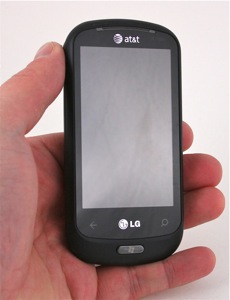
The LG Quantum is one of the few Windows Phone 7 devices to have a physical keyboard. As with its other smartphones, however, LG takes a decidedly feature phone approach to the Quantum. Did LG go far enough in shedding its feature phone funk to attract the more sophisticated smartphone crowd?
Body
From an arm's length, you'd never guess that the Quantum is a smartphone. It looks (too) similar to LG's line of messaging devices. The well-trained eye might be able to guess by the button configuration at the bottom of the LG's front panel, which has the requisite Back, Home, and Search keys.
The Quantum is a thick, heavy phone. If you drop in on your foot, it is going to hurt. It feels very dense, and the metal, plastic and rubber materials with which it is constructed give it a sturdy, strong feel. The back battery cover is made of brushed metal, and looks great. Despite its density and weight, the Quantum is probably the most compact of the Windows Phone 7 (WP7) devices available so far due to its smaller display. You can put it in your pocket, but you're going to know the Quantum is there.
As I mentioned, the only controls on the front of the Quantum are the three WP7 buttons. The Back and Search keys are capacitive buttons that are part of the glass panel covering the display. The Home button is a physical key set below the glass panel. I like that Home key is a physical button, especially since it feels so good to use.
The microUSB port for charging and data transfer is on the left side of the Quantum. It is covered by a plastic hatch that peels back easily. The volume toggle is a sliver of a button that is set flush with the right edge of the Quantum. It is too slender, and set too far into the surface of the phone, for my tastes, plus travel and feedback were a bit weak. The same goes for the dedicated camera button. It would be better if it protruded a bit more. It suffers from limp travel and feedback, too, and the two stages - for focusing and shooting - are very hard to tell apart.
The power/lock key is placed on the top edge of the Quantum. Thankfully, it is larger and works better than the other controls. A 3.5m headset jack is next to it, so you can use your Skull Candy 'phones.
The Quantum's slider mechanism could stand up to a Sherman tank. It's solid as all hell, and snaps open and shut with a solid "thwock." LG has graced the Quantum with a four-row keyboard. The bottom row is reserved mostly for the space bar, and other control keys. The keys stand up from the surface just enough, but have little shape to them. I'd prefer they were slightly domed to give them a more distinct feel under the thumb. They have good travel and feedback, though. As you might expect to find on an LG feature phone, there is a dedicated emoticon key, but no ".com" key, which would be more helpful in a smartphone, in my opinion. Thankfully, there are dedicated keys for the period and camera. Also, the Function and Shift keys are placed off the keyboard itself, to the extreme left. I found them a pain to reach for and use.
Nothing about the LG Quantum's hardware is awesome or revolutionary. It's simply a solid device that mostly works as it should.
The Three S's
Screen
The Quantum has a 3.5-inch display with 800 x 480 pixels. It packs the same number of pixels into a slightly smaller area when compared to its WP7 brothers, and it simply looks fantastic. Colors are rich and bright. Text is smooth and free of jagged, pixelated edges. Brightness was also great. It amazes indoors, and also is functional outdoors. Where many devices become washed out and hard to see, the screen took a beating from sunlight in stride and I was still able to interact with the Quantum, no problem.
Signal
The Quantum was able to find AT&T's 3G network, but maintained only a tenuous connection to it. Signal strength wavered a lot, though it never dropped down to EDGE coverage. How does that translate to real-world performance? The Quantum didn't drop any calls while I tested it. I was able to connect most calls on the first dial, though I missed several calls, which went straight to voicemail rather than reach the handset. The Quantum performed slightly worse than the HTC Surround in signal tests. On the data side of the equation, network speeds felt consistent and fast (enough).
Sound
The LG Quantum performs well when it comes to voice quality. The volume and quality of sound coming from the earpiece were vastly superior to the Surround, and I heard little or no digital noise, crackling or hissing. Mostly, voice calls were clear and of ample volume. The same goes for the speakerphone. I was able to crank it up to a nice, loud setting and still hear a conversation as I moved about my house. Calls sounded good through the speakerphone. Alert tones and ringers could also be set to levels suitable for most environments, though the vibrate alert was a bit on the weak side.
Battery
Battery life on the LG Quantum was very good. It easily lasted an entire day, with email set to sync every 30 minutes, heavy web browsing, and plenty of Facebooking. I consistently got a day and a half of life out of it, no matter how much I used it. A day and a half should be good for most people.
Touch
The LG Quantum's screen and user interface are amazingly responsive. The screen responds to every touch, flick, and swipe with no delay. I found it to be accurate, and never had to double press anything.
Basics
Menus
When held side-by-side with the HTC Surround, there are virtually no changes to the way WP7 works on the Quantum — and that's the way Microsoft wants it.
Pressing the lock key wakes the display and shows a lock screen. From the lock screen, users can see the time and date, as well as the number of missed calls, text messages and emails at the bottom of the screen. Swipe from the bottom to the top to unlock the display.
There are three main navigation buttons that will appear on every WP7 device, and they must appear in the same order: Back, Home, and Search. The Back key takes you back one screen, the Home key takes you back to the Start page, and the Search key opens the Bing search application. (Bing Search is contextual, meaning it adapts to whatever you happen to be doing. For example, if ou're in your inbox and hit the Search button, Bing will search through your inbox.
The WP7 home screen makes use of "live tiles" for all its systems and content. Flicking up or down lets you sort through the tiles. The tiles can be dragged to different places, or deleted altogether.
Users can swipe the screen to the left to access the full, main menu. The main menu displays a huge, long list of all the apps and features, single file. Again, you can flick it quickly up and down to find what you need, as well as pin any of these apps to the home screen.
WP7 also makes use of Hubs. The Hubs are for large collections of content, such as Pictures and Music/Video. Once you've opened a Hub, you keep swiping to the left to drill down deeper into that Hub.
Some apps allow for adjustments and others don't. You'll know the application can be adjusted when you see a little icon tray at the bottom of the screen, accompanied by three little dots.
As with the other WP7 devices, the Quantum has limited support for landscape orientation. For example, turning the phone on its side from the home screen does nothing. The menu doesn't reorient itself. It's the same in many other apps.
Landscape support is inconsistent and it takes time and patience to learn which apps and screens support it and which don't. What's worse, opening the keyboard won't automatically re-orient the screen — you need to be within an application that can handle a screen switch, such as the browser, or email program. After a day of trying to remember what screens and apps work in landscape and which don't, I gave up. I simply always used the Quantum in portrait mode and ignored the physical QWERTY. If that's the route you end up taking, may as well buy the Samsung Focus, instead.
Calls/Contacts
Calls
If you need to make a phone call, you'll have to do so from the main Start screen. Press the Phone app, and the call history is the first thing you'll see. There are icons at the bottom that open the dialer, the People Hub or voicemail.
If you'd like to dial a number right away, press the little phone icon next to the number and away you go. Press a call log, and it will open up the basic information about that entry. There's a little icon of an old floppy disk at the bottom. Press that if you want to save the number to your contacts.
After a call has connected, a small pull-down menu lets you do most of the expected things, such as add a call, put a call on hold or mute, or activate the speakerphone.
Contacts
The People Hub is an essential part of the WP7 experience. Microsoft has fully integrated the contact application with Facebook.
Because People is a Hub, it has the left-to-right layout with columns separating everything. The main view is "all", which is a huge list of all your contacts. Your most recent Facebook status appears at the top. There are two little buttons that, when pressed, allow you to search through your contacts or add a new one. The fastest way to search for contacts is to open the People Hub.
Swipe the entire page to the left, and you see the "What's New" column. This is a list of the most recent status updates from your contacts. This includes rich content such as images, links, and videos. Pressing any of the status updates from your contacts will pull up that person's entire list of recent status updates.
WP7 allows users to sync Google, Yahoo, Windows Live and of course Exchange contacts to their device. Each contact page holds plenty of information, including email addresses, numbers, street addresses, birthdays, web sites, and so on. If there's a particular contact who's stuff you want to see more often, press the little pin icon to pin them to your home page.
Messaging
The LG Quantum supports Microsoft Exchange natively, as well as POP3/IMAP4 email, SMS/MMS. If you're in the mood for some IM action, you'll need to look for it in the Windows Phone Marketplace.
The email program is very, very good. As with many email systems, all users need to do is enter their log-in credentials and Windows Phone 7 takes care of the rest. Users can adjust the sync settings, and after the initial download, email flows in. The inbox is broken into several side-by-side panes, including All, Unread, and Urgent.
The settings are available at the bottom of the screen. There are a number of icons there, which allow users to start new emails, perform batch delete/file actions, sort messages into folders, and refresh their inbox. It all makes sense and works well. WP7 and the Quantum support multiple email accounts.
The SMS/MMS application, which is one of the core tiles on the device, offers threaded conversations. Text appears in colored bubbles in a way that will be familiar to most people. Images appear in-line with the conversation. It is a cinch to sort through entire conversations, delete whole threads, and keep your conversations organized.
Social Networking
Facebook is built into the People Hub. From there, you're limited to interacting with wall posts and status updates.
A separate, dedicated Facebook application (found in the Marketplace) is fashioned after the Hubs; users swipe from left to right to access different segments of content. The main segment offers access to all the different facets of Facebook, including your own profile, friend requests, notes, account settings and so on. After that, the next segment houses the news feed, the second offers photos, the third offers events and other calendar items, the fourth offers notifications. This application looks great, works well, and I like the way it organizes friends' Facebook photos into a montage of images. This is great.
As far as Twitter is concerned, no apps are pre-installed, but a number of Twitter apps are available from the Marketplace. My favorite is the official Twitter mobile application. It works very well, and makes the best use of WP7's strengths.
Extras
Media
Music
The music experience on WP7 handsets - and the LG Quantum - continues to be excellent. Once all my music was loaded (Mac users need to download the beta sync client from Microsoft), the Quantum automatically went to the Zune Marketplace and pulled down album covers, artist info, artist bios, links to other artist content, and so on.
The media player interface itself is easy to navigate and use, and the on-screen controls make controlling your tunes easy. It's also easily sent to the background while you perform other tasks.
The Quantum's Zune player also offers support for podcasts, radio, and the full Marketplace for buying music. Users can also choose to subscribe to the Zune Pass for a monthly fee.
Video
The Zune player handles most of the popular video formats, and the way your content interacts with the Zune Market is great. I thought the Quantum's screen was a bit small for widescreen movie watching, but those movies sure looked great.
Camera
Camera
Microsoft has mandated that all WP7 devices launch the camera automatically even when the phone is locked and asleep. I still can't get over how awesome this feature is.
The camera software itself copies the behavior of a lot of other touch phone cameras. There is a box that appears in the center of the screen to help with centering the shot. Basic controls to access zoom and the video camera are stacked on the right side of the display, including a software button for the full settings menu. The full menu allows you to adjust the metering capability, how it focuses, the flash, and so on.
Once you've set up how you want the camera to behave, press the shutter button half-way to focus, and then all the way to release the shutter. As I mentioned earlier, the camera button is a little mushy. It takes some getting used to. The Quantum snaps and processes images in perhaps 3 seconds.
Once images are captured, they are whisked into the gallery app.
Gallery
The Pictures Hub uses the Zune-like architecture, meaning you scroll sideways to access different sections of the Hub. Your own photos are stored in one place, but it also syncs the photos shared by your Facebook friends. Selecting one of the Facebook photos lets you see any tags or comments attached to the photo, and, if you want, you can leap to that person's Facebook wall. It also automatically syncs your own Facebook photo galleries with the device.
You can't edit or manipulate photos at all. It doesn't offer basic rotate, crop or zoom, let alone anything more advanced such as adjusting exposure. Instead, the Pictures Hub is all about sharing. It lets you easily upload images to Facebook, SkyDrive (Microsoft's photo upload service) or send them along via MMS or email.
Pictures/Video
Pictures
The images I captured with the Quantum's 5 megapixel camera were pretty good for a 5 megapixel camera, definitely better than those I captured with the HTC Surround. Outdoor images were sharp, crisp, and colorful. Exposure was mostly good. Some images lost detail in overly bright or overly dark spots, but that's pretty normal behavior. Shots taken indoors showed a bit more grain, but maintained focus. The flash helped rescue what surely would have been miserable failures, but don't count on it to work past about 5 feet.
Because WP7 does such a good job at coaxing users into integrating their Facebook and online albums, sharing pictures will be easy. I don't think anyone will be embarrassed by the quality of these images, though I wouldn't quite call them print-worthy.
Video
The Quantum's video-shooting capabilities also out-matched the Surround. I found any sort of footage captured outdoors was well exposed, with proper white balance and little grain. Indoor video footage, as always, looses some color and brightness, and is speckled with more noise.
Spreading Quantum-ified video will come naturally to those who like to shoot-n-share.
Browser/Customize
Browser
The Quantum uses WP7's Internet Explorer browser, which is very capable. It's fast, elegant, and works almost as well as the competition. It supports pinch-to-zoom, and full HTML as well as mobile web sites. Double-tapping zooms in and out quickly.
Web pages loaded quickly over AT&T's 3G network. Over Wi-Fi, the browser was extremely fast. I was very pleased with the browser's speeds.
IE for WP7 makes it fairly easy to add open tabs, add favorites, search for items on the page and so on. I had an easier time using the Quantum's browser (compared to the Surround's) due to the presence of the QWERTY keyboard. Having the four-way directional buttons on the keyboard goes a long way toward helping fine-tune text editing and typing out URLs.
The browser is really quite good, and will disappoint few.
Customize
Windows Phone 7 offers a pretty standard set of features that can be customized. The home screen tiles can be rearranged, deleted, and otherwise organized how the user might prefer. The main menu is stuck in the list view, however. Being able to pin apps, shortcuts, web pages, etc., to the home page is a nice touch and makes up for the lack of interactive widgets.
Users can also adjust the background color (white or black) as well as the color of the majority of the tiles.
Marketplace
The Quantum has access to Windows Marketplace for Mobile. The Apps are added to the main menu once downloaded and installed. The Games are added to the XBox 360 Hub. The Marketplace shows screenshots, user reviews, related apps, and how much the app costs to download.
Because the Quantum is made by LG, it has access to the LG Hub. The LG Hub is sort of like a mini Marketplace for the Quantum. There are a number of apps in there that were developed by LG that specifically work with the Quantum, such as Look n Type (texting-while-walking utility), Tool Box(flash light, compass, etc.), and Panorama Shot (camera utility).
There is also an AT&T Hub, which is populated mostly by AT&T-branded services that are already installed on the Quantum.
Extras
Bluetooth
The Quantum pairs with mono and stereo headsets with no problem. Sound quality through mono headsets was pretty good for phone calls. Sound quality for music through stereo Bluetooth headsets was also good. The Quantum supports the PBA (phone book access) profile, but it can't pair with computers to pass files back and forth.
Clock
It's easy to read the time from the Quantum's lock screen. Press the lock key, and the screen pops to life with a nice digital clock. The time also appears sporadically in the status indicator bar at the top of the screen. I couldn't find any way to adjust the home screen clock behavior, but it works well enough as-is.
GPS
The Quantum has AT&T Navigator and Bing Maps on board. AT&T's Navigator software works just as it does on any other device, and I had no problems at all with the Quantum's GPS system. I much preferred Bing Maps. Bing Maps supports pinch-to-zoom, searching, directions, traffic layers, and even satellite views. Of course, Bing Maps is free, but is limited to providing only a list for navigation. AT&T Navigator provides voice-based guidance, through it costs $10 per month.
Wrap-Up
The LG Quantum combines mostly good hardware with a solid smartphone operating system. Though it still looks a bit too much like a feature phone for my tastes, I am sure many people won't look at it that way. The Quantum is heavy and dense, but offers a roomy QWERTY keyboard for messaging and a fantastic display.
The Quantum performed well at the basics (signal strength, call quality and battery life), and was fast and responsive throughout the user interface. Even the camera and video player stepped up to the plate and delivered a solid base hit.
Microsoft's fledgling smartphone platform still has weaknesses, such as limited landscape support, and lack of cut-and-paste, but those are mostly forgivable for now. WP7's messaging toolset is excellent and there are already plenty of third-party apps in the Windows Phone Marketplace to get you started with social networking, as well as fill in other gaps within WP7.
Would I recommend the LG Quantum? Yes, yes I would. It's as solid a smartphone as any on the market, though it's not a quantum leap forward.

Comments
No messages


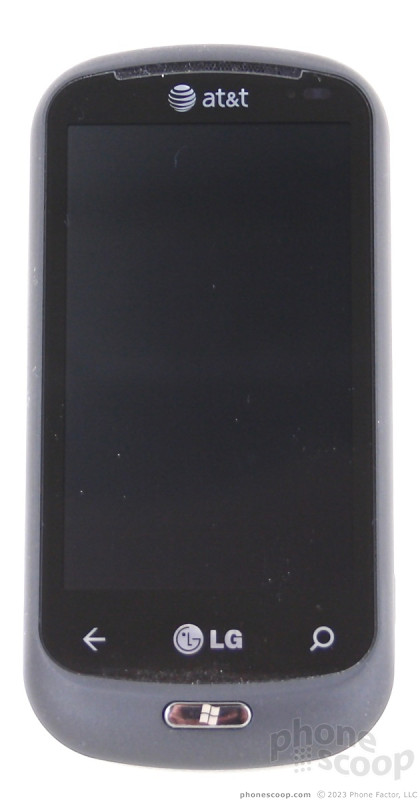


















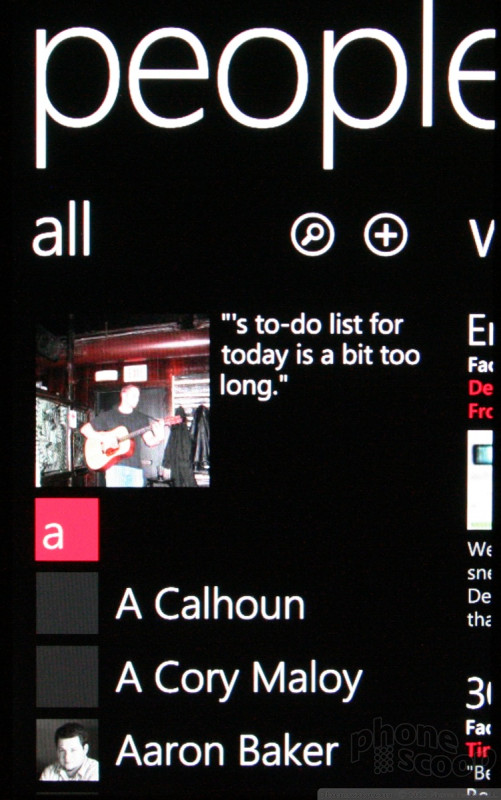









































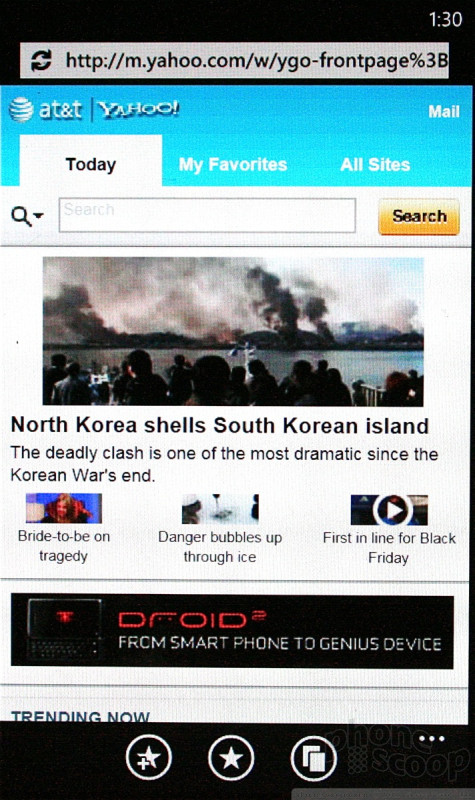




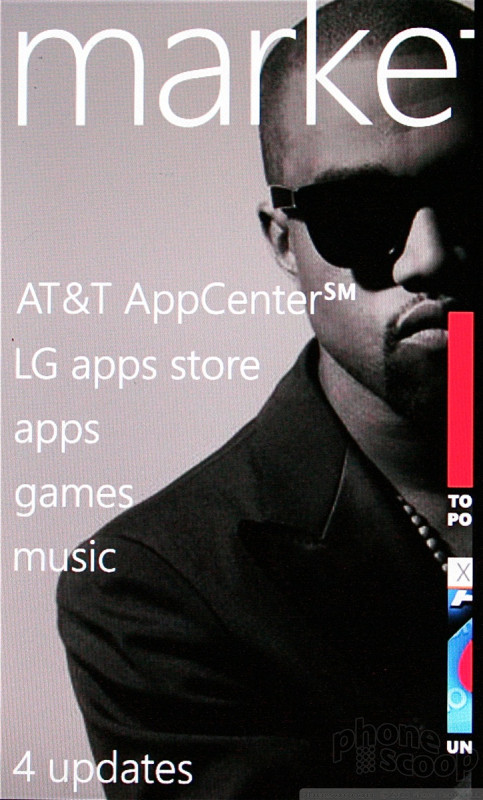



 LG Quantum
LG Quantum



